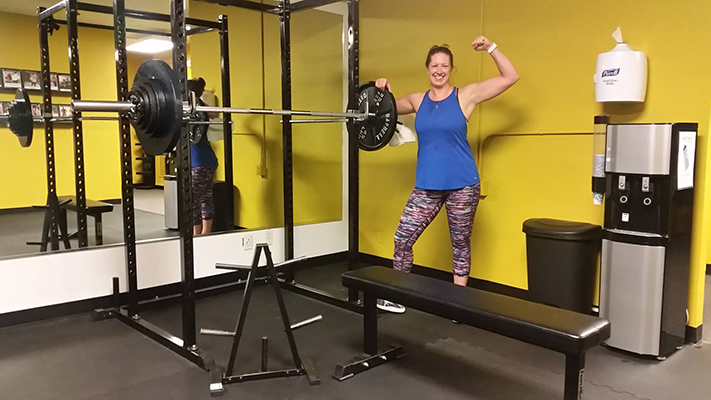We all always hear the same story about how you should always use proper form, full range of motion and a slow to moderate pace, in your exercises.
This is because oftentimes, we see people in the gym just yanking the weights, applying too much inertial force and using just a little of their muscles.
Nevertheless, this is sort of a “complete cheating” while on the other hand, strategic cheating can actually help you in your workout.
Why You Should NOT Cheat on Your Exercises (Completely)
Complete cheating generally involves an excessive amount of inertial forces, accompanied by poor biomechanical positions.
Such positions, done under the resistance of weight, can lead to long-term injuries of your joints, ligaments, tendons, and sometimes, even a muscle rupture can occur.
For this reason, you should mainly resort to the above-mentioned proper exercise execution, followed along with full range of motion and constant tension.
How Can I Strategically Cheat, Then?
Contrary to the current popular approach that dictates “staying a couple of repetitions shy of failure”, back in the golden days when the likes of Arnold Schwarzenegger trained, people looked for ways to always surpass failure.
For this reason, many weight training techniques came to life, to up the intensity during heavy sets.
One of those techniques, that doesn’t involve a partner or a spotter, is the “cheating” technique.
The cheating technique basically implies using inertial forces to squeeze out another couple of repetitions AFTER you reach failure.
In other words, cheating is done AFTER you’ve done the exercise right AND reached failure.
Think of cheating as forced repetitions, where a spotter helps you get a couple more repetitions, after you can’t do any more unassisted.
Which Exercises Can I Cheat On?
Now, due to the twisty nature of cheating, you have to be very careful on the exercises you choose to cheat on.
Some movements cannot be cheated on with a proper technique, which increases the chance of injury.
As a matter of fact, there are only a handful of compound exercises which you can use to safely take yourself beyond failure.
Those are namely:
#1 Bicep Curls
Whether you are doing dumbbell or barbell bicep curls, or even hammer curls, you can easily lean forward slightly and use some inertial force.
As a matter of fact, Arnold himself used this technique to train his biceps, which was dubbed one of the best bicep peaks of all time!
#2 Lateral & Front Raises
Since the position of the dumbbells is almost identical with that of the bicep curls, lateral & front raises allow you to do the same thing – Lean forward slightly and come back up on the concentric part of the repetition.
Looking to get some 3D delts that pop? Use this technique.
#3 Hanging Leg Raises
If you’ve done a solid number of strict hanging leg raises and want to squeeze out a couple of more after failure, simply, swing back and forth slightly more!
Using the cheating technique on this exercise will lead to immense abdominal pump and ultimately, better definition and separation (if your nutrition is on point!).
How Often Should You Use This?
No matter how much control you have over this technique, it can still be dangerous and lead to injury, because you demand of the body more than it is currently capable of.
For this reason, properly dosing this technique is important if you decide to use it in the first place.
Since there is no definitive answer to the frequency of use, try and use this technique for less than 10% of your sets, on days when you FEEL that you have extra power.
Don’t do it just because you think you have to.
Conclusion
Because the muscles respond to the tension/resistance that the training loads create, full range of motion, proper exercise form and constant tension should be the main goals of a workout.
Nevertheless, there are training sessions where you just have to take yourself further.
This is exactly when you can apply the cheating technique on appropriate exercises.
If not, you can always use a spotter to help you squeeze out that extra bit of effort!

